Potty Talk
This article was originally published on Strong Towns member Johnny Sanphillippo’s blog, Granola Shotgun. It is shared here with permission.
I was walking the dog along the Embarcadero here in San Francisco when I got an email from a Kiwi who currently lives in Australia. He sent this link along with the observation that, “When I visited NYC, it was an art form finding a free bathroom. A great challenge. Although I usually just ended up in another bar...” He continued, “Melbourne has beautiful parks with great facilities.” And, “What fascinates me about the Yanks is that they will spend $2 billion on a Stealth Bomber and yet a public toilet is too expensive.”
At that exact moment I was standing in front of just such a facility as it was being installed by the French outdoor advertising company JC Decaux. They’re best known for their kiosks, bus shelters, news agent stands, and poster columns, but they dabble in public toilets, as well.
One of these units will set you back about $350,000 and requires an annual service and maintenance budget of between $170,000 and $205,000. Back in my university days, I published a paper and gave a presentation describing how a comfortable country home could be purchased for the price of a single public toilet in the city. A great deal of the cost associated with such facilities involves supportive infrastructure and administrative overhead.
The highly engineered self-sanitizing apparatus is an expression of complexity eating its own tail. Instead of a human cleaning a toilet with some bleach and a brush, an army of technicians needs to constantly adjust the mechanisms with specialized tools and exotic replacement parts. It’s an expensive technical solution in search of a problem. But I understand why it appeals to the people in charge from 30,000 feet away.
The city of San Francisco has an official website pertaining to public toilets. They’re very clear about the fact that these facilities cost the city nothing since advertising revenue covers all expenses via a longstanding public/private partnership. Ultimately, only cities as prosperous as San Francisco can indulge in a $350,000 toilet. And only places like San Francisco with the right demographic profile attract such private partnerships. You will never see one of these facilities in an impoverished backwater because there’s simply no way to extract a yield. There are only 25 of these JC Decaux toilets in a city of 800,000 people and they’re all in tourist destinations.
What my Kiwi friend discovered in New York is the way Americans usually solve the public toilet problem, with a far simpler yet less convenient or egalitarian method. Private establishments allow paying customers to use their facilities. Need to pee? Buy a beer. Have to adjust your feminine hygiene? Purchase a pastry. In most cases, “respectable-looking people” can sweet talk their way into a private toilet by appealing to a sympathetic clerk without a monetary transaction. In the same way, undesirables (define as you may) are discretely filtered out. “The bathroom is out of order at the moment.” When all else fails, there’s always a dark corner out on the pavement.
There are still a handful of surviving public toilets owned and operated by the city itself in places like Golden Gate Park that date back to the pre-World War II era. I have no doubt they’re even more expensive to maintain than the privatized units, and that expense comes straight out of the coffers at City Hall. But all over the city there’s a parallel universe of mobile porta potties meant for specific individuals and kept under lock and key. These can be rented for about $150 per month, which includes the cost of servicing the units and removing the accumulated contents by vacuum truck.
After my chat with the Kiwi I began to notice the ways in which some locations provide public facilities in a more sensible manner. This plaza used to be a parking lot and was incrementally transformed into a town square with simple potted plants, shade structures, and outdoor furniture. Notice the porta potty fitted with garden lattice and a mobile handwashing station. Perhaps this is a stopgap measure until a proper permanent facility can be installed. Or maybe this is as complex as this venue ever needs to be. Personally, I would lobby for an ADA-compliant mobile model and call it good. On the other hand, this same plaza has indulged in a high-tech internet connected trash bin using grant funding from the city. (I’m rolling my eyes.)
The lattice-covered porta potty, seen at the right.
In a completely different part of the city, far from residences and shops, are portable toilets and wash stations along with a human attendant to keep it tidy. These are intended to serve the homeless population. It’s not about convenience. It’s about public health and sanitation, since the alternative is human waste in the streets and individuals becoming vectors for disease from lack of clean water.
At the end of the day, our public facilities reflect the various layers of society. So long as everyone stays in their pigeonhole and behaves according to expectations, all is well. But in true San Francisco fashion, there’s now an app to help guide people in this regard. I’ll leave you with this bit of public toilet wayfinding from YouTube.
All images via Granola Shotgun.


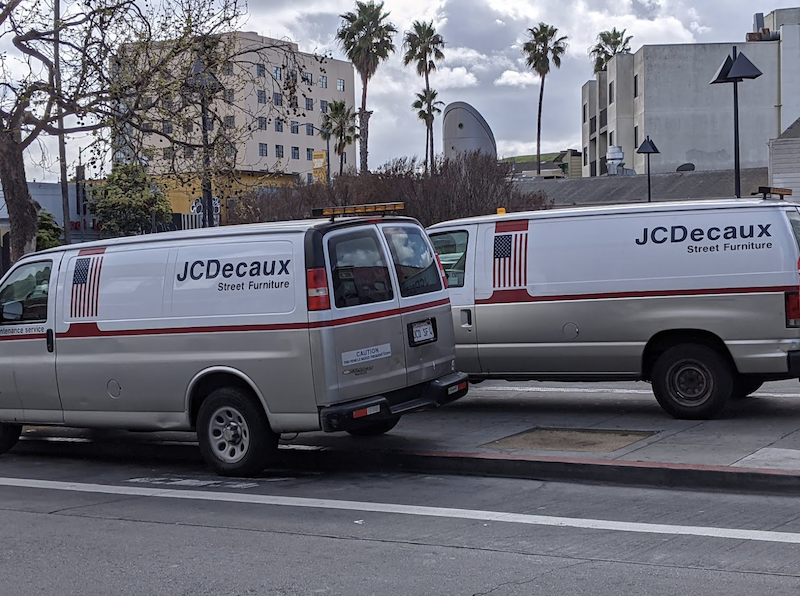
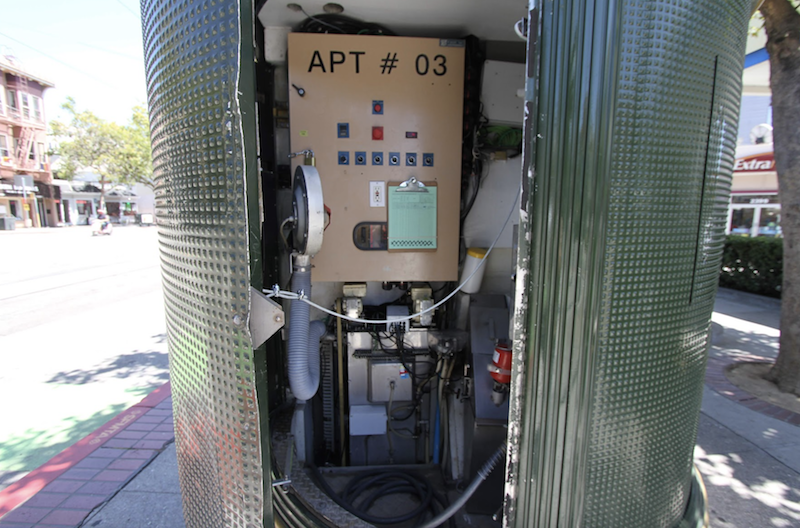
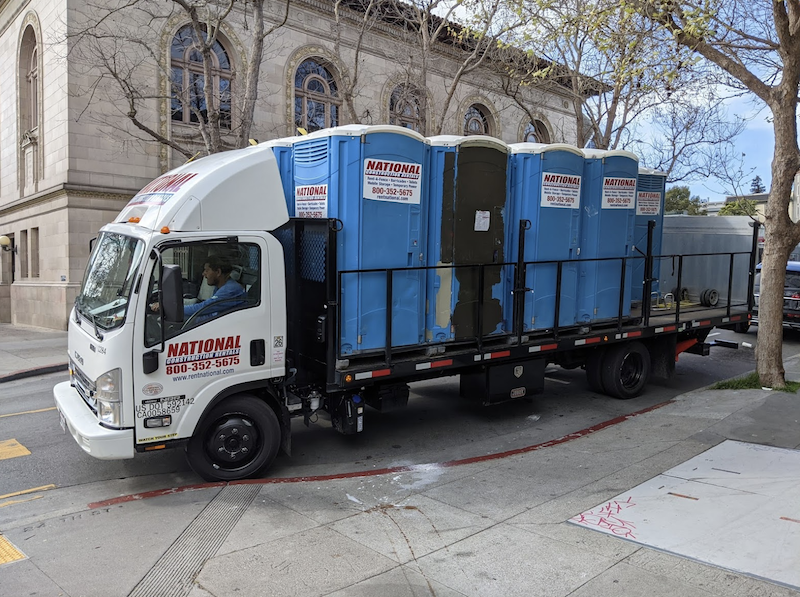
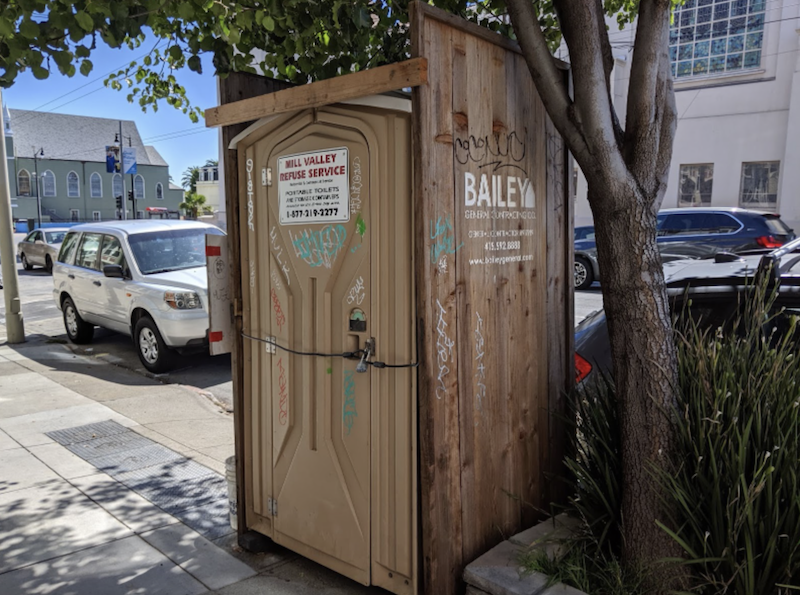
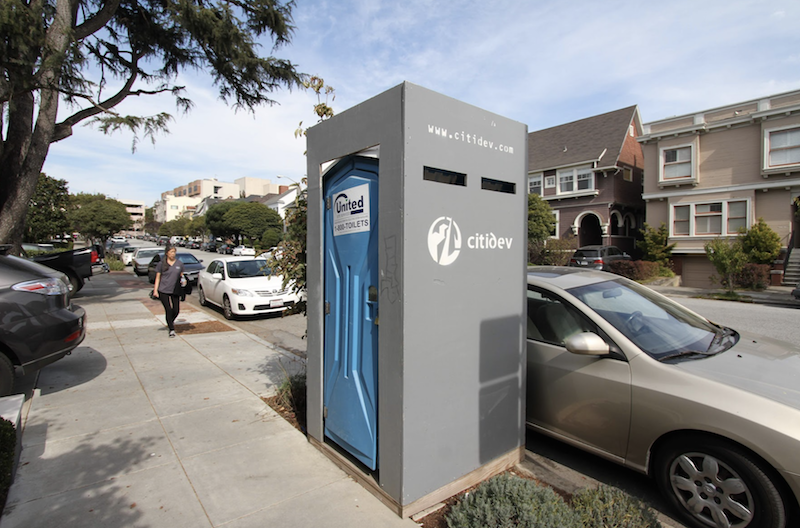
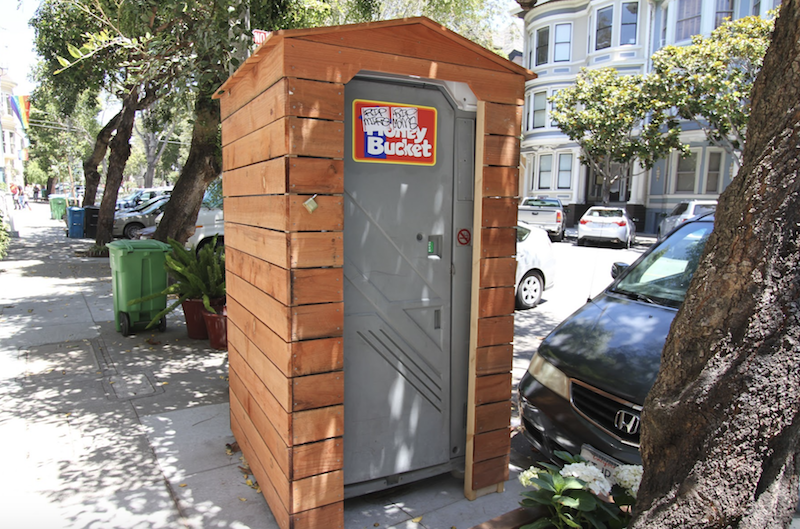
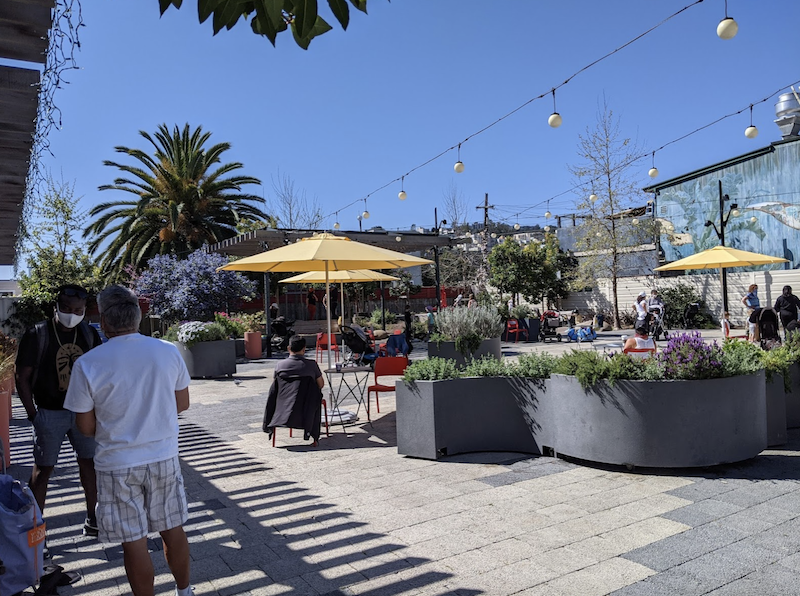
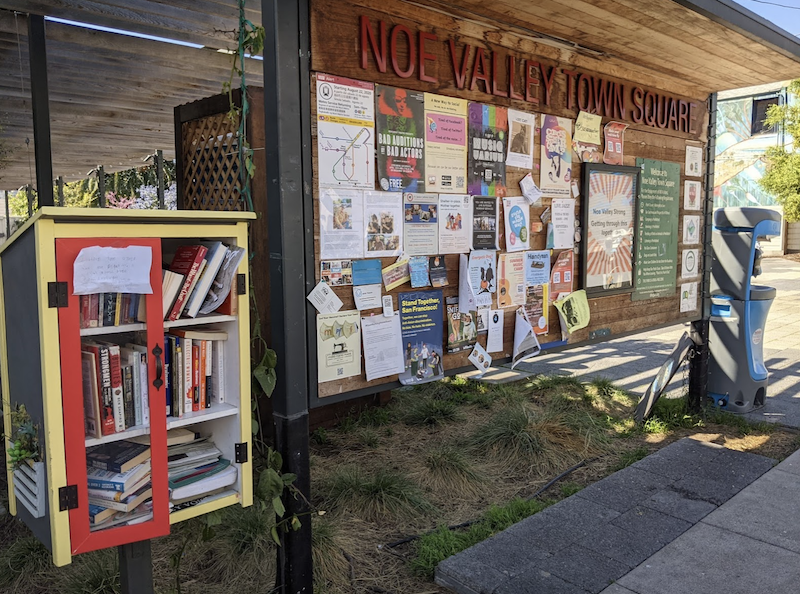

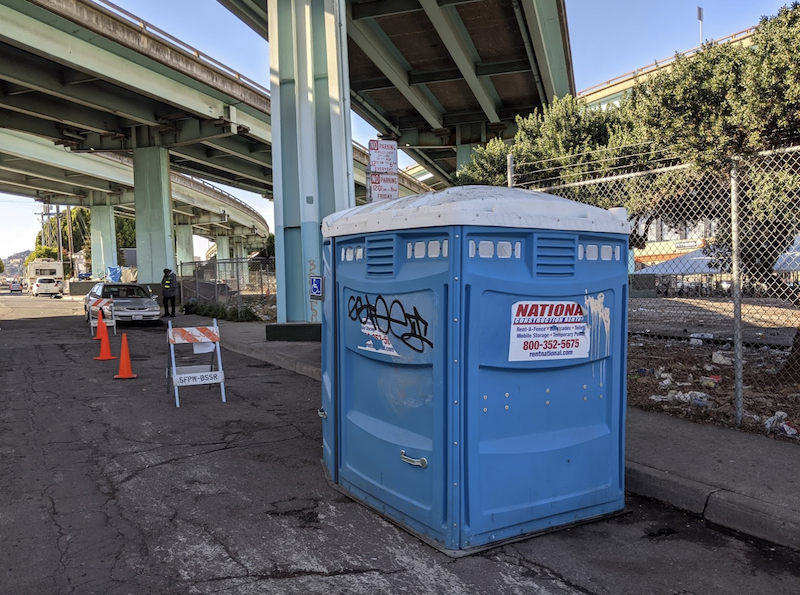
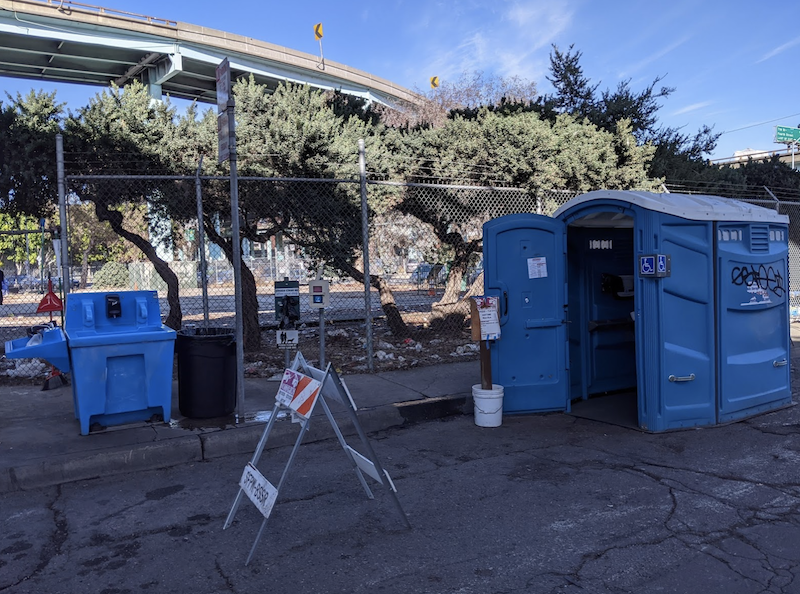
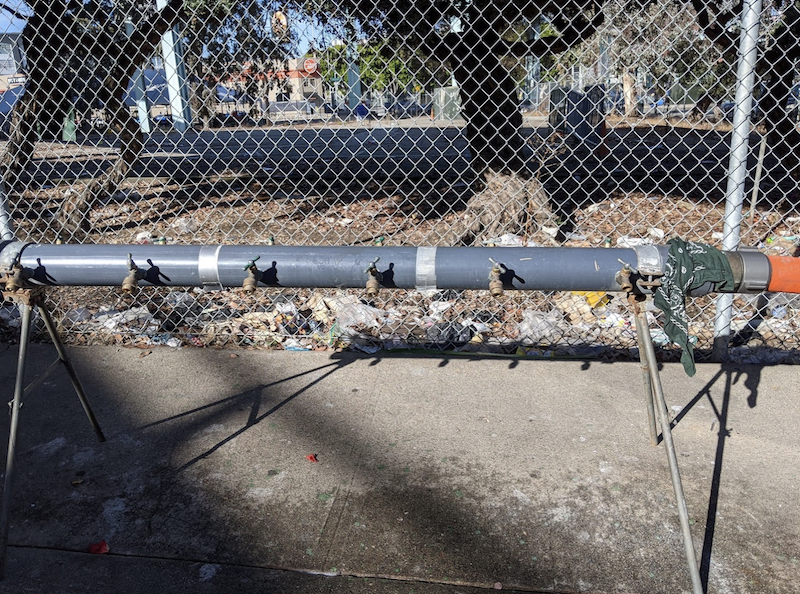
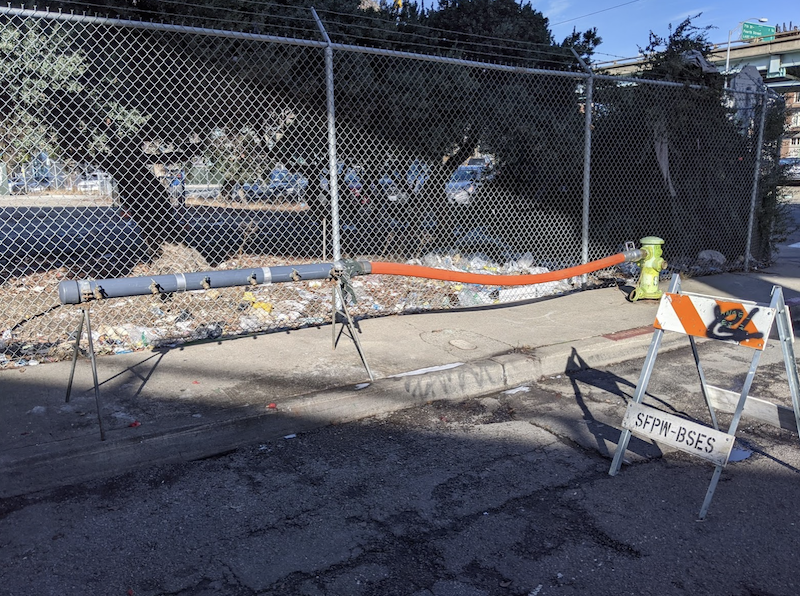



Removing an urban highway is a big win—but the work doesn’t stop there. Providence shows how cities can take the next steps to repair their communities.